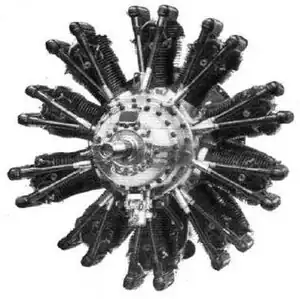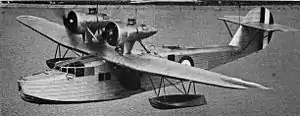| Serval/Double Mongoose | |
|---|---|
 | |
| Type | Radial engine |
| National origin | United Kingdom |
| Manufacturer | Armstrong Siddeley |
| First run | 1928 |
| Major applications | Armstrong Whitworth Atalanta Saro Cloud |
The Armstrong Siddeley Serval was a British ten-cylinder aero engine developed by Armstrong Siddeley in the late 1920s. Following company tradition, the engine was named for the serval.
Design and development
The Serval was a ten-cylinder, double-row, air-cooled radial piston engine. It was developed from the Armstrong Siddeley Mongoose and was, more or less, two Mongooses built around a single crankcase. In fact, it first appeared as the Double Mongoose in May 1928.[1]
Built in several variants, power output was about 340 hp (254 kW).
Variants
Serval I initially Double Mongoose
- (1931) 340 hp.
- Serval III
- (1932)
- Serval IIIB
- (1932) 310 hp.
- Serval IV
- 310 hp.
- Serval V
- (1933) 340 hp.
Applications

AS Serval powered Saro Cloud
Specifications (Serval I)
Data from Lumsden.[2]
General characteristics
- Type: 10-cylinder double-row radial
- Bore: 5 in (127 mm)
- Stroke: 5.5 in (139.7 mm)
- Displacement: 1,080 cu in (17.7 L)
- Length: 54.25 in (1,378 mm)
- Diameter: 45.6 in (1,158 mm)
- Dry weight: 714 lb (324 kg)
Components
- Valvetrain: Overhead poppet valves
- Fuel type: 77 Octane petrol
- Cooling system: Air-cooled
- Reduction gear: Direct drive, Left hand tractor
Performance
- Power output: 340 hp at 2,000 rpm at sea level
- Compression ratio: 5:1
- Power-to-weight ratio: 0.47 hp/lb
See also
Related development
Related lists
References
Notes
Bibliography
This article is issued from Wikipedia. The text is licensed under Creative Commons - Attribution - Sharealike. Additional terms may apply for the media files.